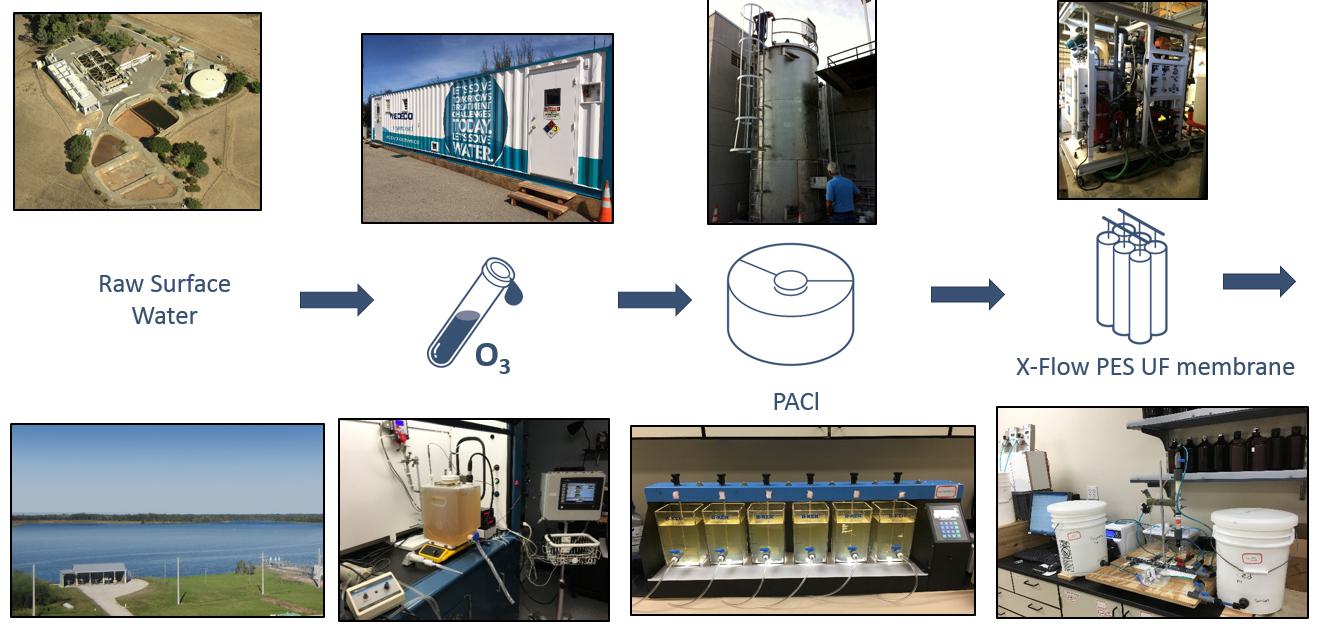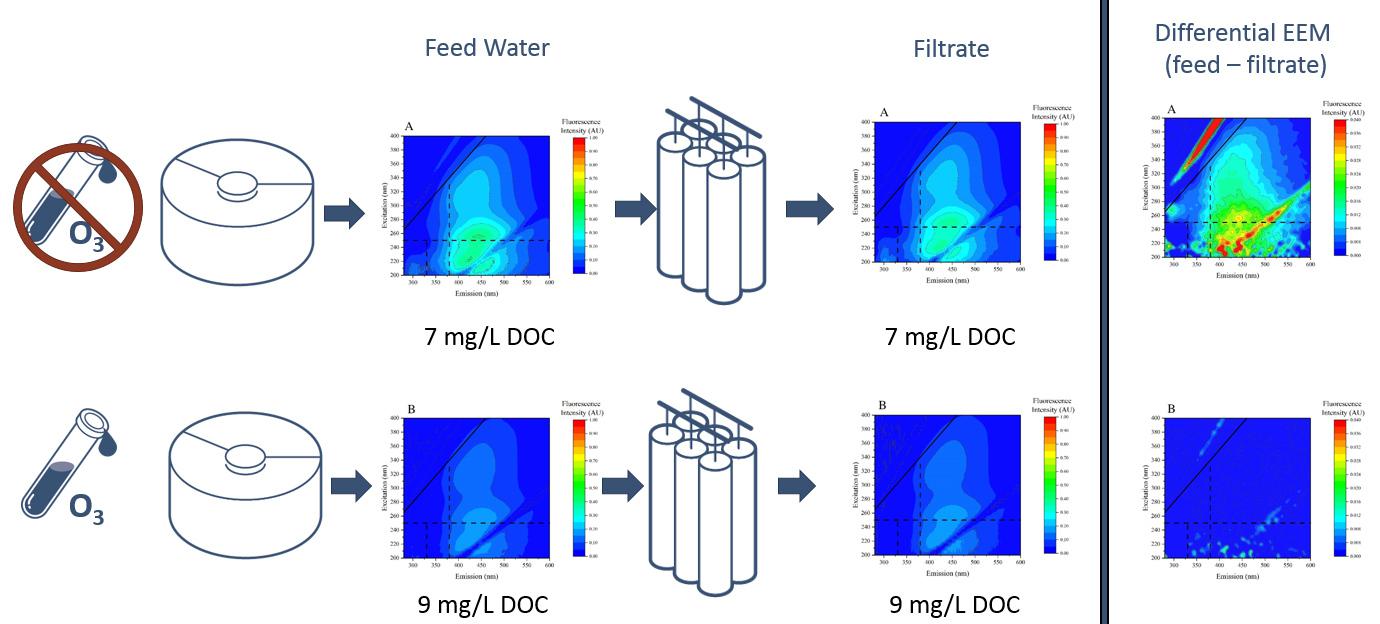Reducing Chemically Irreversible Membrane Fouling through Preozonation of Surface Water
Paul G. Biscardi PhD - Hazen and Sawyer; Steven J. Duranceau PhD, PE - University of Central Florida
Last Modified Feb 04, 2025
The adoption of membrane filtration processes for drinking water treatment has increased over the last decade in response to new regulations and the increased use of alternative drinking water supplies. However, membrane fouling, which results in a loss of permeability, is still considered a major barrier to further adoption of membrane filtration technology.
Related Topics:

Membrane fouling occurs as materials either deposit and form a cake layer or adsorb directly to the surface of a membrane.

Research has indicated that preozonation may reduce long-term chemically irreversible membrane fouling.
This paper presents the results of three years of research on membrane fouling including a novel application of preozonation to reduce membrane fouling. The work was divided into three components:
In the first component of the work, the long-term fouling behavior of a polyethersulfone (PES) hollow-fiber UF membrane was studied at the pilot-scale for treatment of surface water over a one-year period. Pilot testing of a coagulation-flocculation-sedimentation (CFS) pretreatment system revealed that chemically irreversible fouling was poorly correlated with turbidity and total organic carbon.

In the pilot test, ozone was dosed at 2.5 mg/L. Internal contact chambers provided approximately 1 minute of contact time, while the external contact chamber provided an additional 7.5 minutes of contact time. Total fouling was reduced by 41% when preozonation was applied suggesting that the overall fouling rate had been reduced.
In the second component, pre-oxidation with ozone (preozonation) was then studied as a pretreatment process to reduce natural organic matter (NOM) fouling at the pilot-scale. This work suggested that preozonation reduced long-term chemically irreversible fouling. The chemically reversible fouling index increased by 59%, indicating that preozonation changed the characteristics of the foulants, yielding more effective chemically enhanced backwashes.
In the third component, bench-scale work that studied changes in NOM characteristics associated with the improved process performance were performed using fluorescent excitation-emission (EEM) spectroscopy and high-performance size-exclusion chromatography (HPSEC). Specifically, ozone was applied prior to a CFS-UF process and compared to a CFS-UF condition without ozone as the control. Although CFS alone reduced turbidity by 29%, ozone, when integrated with CFS increased turbidity by 63%.

Fluorescent excitation-emission matrices confirmed that humic acid-like and fulvic acid-like substances known to cause irreversible fouling were retained on the control membrane, but were absent on the membrane when integrating ozone with CFS pretreatment.
However, ozone, when integrated with CFS and UF reduced filtrate true color by 38%, UV254 absorbance by 10%, and SUVA by 28%, relative to the control, indicating that while ozone had impaired the removal of turbidity during CFS pretreatment, it had improved the removal of aromatic-rich organic foulants. Fluorescent excitation-emission matrices confirmed that humic acid-like and fulvic acid-like substances known to cause irreversible fouling were retained on the control membrane, but were absent on the membrane when integrating ozone with CFS pretreatment.
Overall the results of this work suggest that preozonation can alter dissolved organic matter characteristics in such a way that the fouling can become more chemically reversible.
This research has also been published in Journal AWWA, Journal of Water Supply - Research and Technology-Aqua, and Desalination and Water Treatment. The full dissertation can be accessed on the UCF website.










